How to Portrait Photography Like a Pro – Tips & Techniques
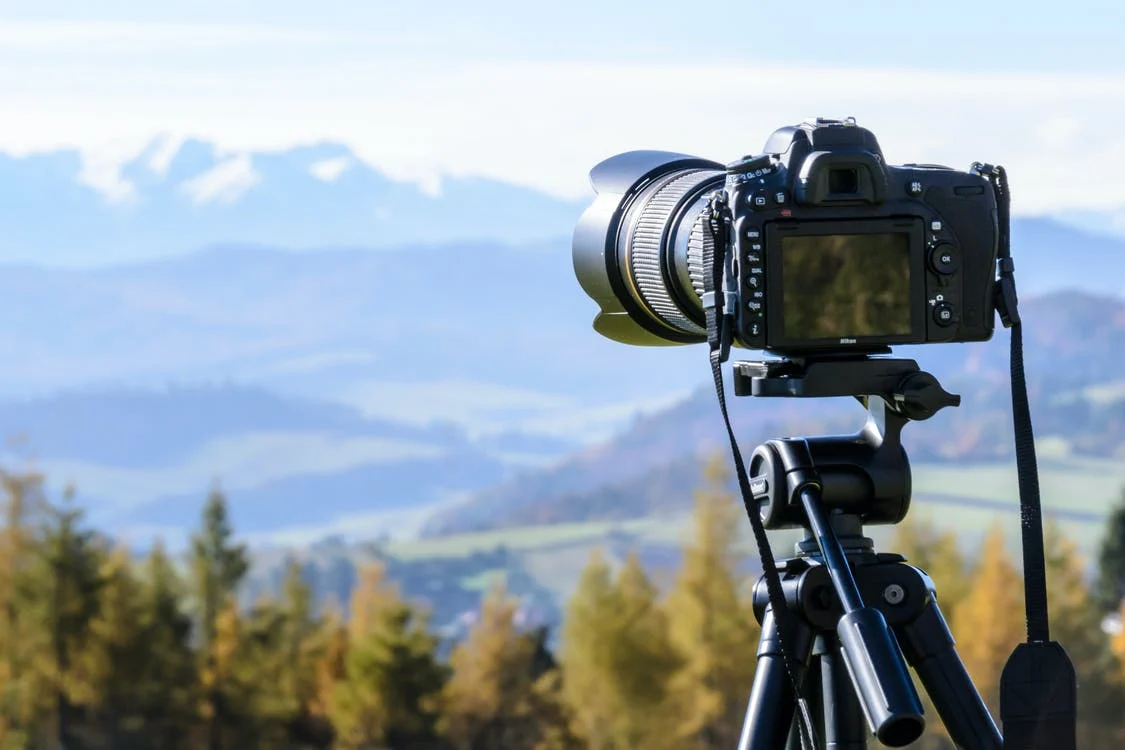
In this article, I have gathered the best information for you guys.
I think I am near to achieving the PRO level of photography using my DSLR Camera, and this happened because of these portrait photography tips.
And I strongly believe in the fact of:
‘Knowledge increases by sharing it with others.’
So, without wasting any more time, let’s begin with the portrait photography tips and some other important points about dslr vs mirrorless camera.
I’ve put together a complete list of the best techniques for capturing great portraits.
Moreover, these tricks will work even if you own a Mirrorless Camera. So, let’s focus on the tips that can make you a Pro Photographer.[1]
- 14 Portrait Photography Tips
- 1. Focusing on the subject
- 2. Get an appropriate location
- 3. Choosing the Right Pose
- 4. Taking candid portraits
- 5. Capture expressions and emotions
- 6. Learn the Camera basics
- 7. Choosing the right lens
- 8. Set the Background
- 9. Understand Shutter Speed, ISO, and Aperture
- 10. Decide a color palette for portraits
- 11. Light and Sun matters
- 12. Perfect angle for the perfect photo
- 13. Props and accessories
- 14. By breaking other rules of Portrait Photography
- Additional Tips
- What is Portrait Photography? [History and Present]
- Here are facts to remember for perfect portrait photography
- Our Verdict
1 14 Portrait Photography Tips
These are the tips that I have for you if you want to learn the art of portrait photography. Let’s start with all one-by-one.
1. Focusing on the subject
The subject or you can say the object is important to get a perfect shot. Without them, what will you capture in the frame? Giving importance to your subject is the first tip in this article that you need to keep in mind.
While communicating with your model, make sure to have polite and respectful eye contact with them.
Create bonds with your model and spend time chatting with them. Have a chit-chat before or after the shoot. Meet them face-to-face prior if possible.
Make sure that the subject is aware of your style of clicking photos. Also, the photographer and the object need to know and trust each other.
If the subject is well known with photographic verses, you can also share with them your plans of camera settings likes:
Focal length, depth of field, focus, frame, mode, ISO, fill points, etc.
Even if the subject’s face is known to you, he/she might feel uneasy while facing the camera.
Advisably you should remain in communication with your subject before and while the ongoing photo session.
2. Get an appropriate location
The location you select for the picture shooting will have a huge effect on the final photo. Also, the camera settings will depend on the natural light conditions if the location is outdoors.
Shooting with amazing natural light outside gives amazing conclusions at the end of the photo shooting. But, it’s also full of difficulties.
Outdoor photoshoots always require prior planning regarding the shallow depth of the field, focal length, weather, shifting lighting, the time during the day, and environmental circumstances throughout the day.
No doubt when shooting in natural sunlight, the photos gonna glow with an amazing shine. But, it is not possible to shoot outdoors every time.
So, when shooting inside, you will require a lot of power. You need to take care of a focal length, light source, indoor light, shadow, and much more.
A professional photographer should have an eye on lighting conditions. Along with that, do not miss the subject’s face, the subject’s eyes, and the subject’s facial features.
3. Choosing the Right Pose
Figuring the best shoot positions for portrait photography for your subject is considered to be a never-ending process.
Getting the person to pose in such a way that makes the portrait stunning is hard. Not only pose, but perfect camera settings, camera angle, proper aperture, amazing background, perfect mode, etc. should be considered.
You can experiment with shallow depth of field, exposure, natural light, focal length, and other finest products.
After you’ve discovered the perfect stance for your model, you can make little adjustments to ensure that every photo is flawless.
Tip
Always keep a stunning collection of your creative photos on your cell phone. Also, do not miss adding a newly shot image to that collection.
You can always open this collection anytime you need to show your creativity to your client. Also, you can create the same effect as the previous images in the new camera shot image. Visual illustrations of your portraits could indeed help you to communicate in a better way with your clients.
4. Taking candid portraits
Forcing your subject to a pose in an unnatural manner in front of the camera can create less ideal results. Some people cannot follow any tips while posing and then create blunders.
Especially, the uneasiness is detectable in kid portrait photography, because staged images can appear unnatural.
So, getting your model comfortable prior to shooting their photos is important. For shooting natural candid photos, you can quickly capture your subject’s natural features. It might result in natural and stunning portrait photographs.
Tip
You can use a larger aperture or larger zoom lens camera to move far from your subject while capturing them. These tips will help them forget their nervousness or rigidity while being shot.
5. Capture expressions and emotions
Photography and shoot is an artistic way to capture the perfect emotion of the subject. It just sounds easier but it’s hard comparatively.
Here are some tips which you can apply to your subject to shoot their natural expression while in a portrait image.
- Make sure that they do not have false smiles or blank stares on their face and eyes.
- Try to communicate in a way that brings a natural twinkle to the subject’s eye. Along with them make them smile and be confident.
- These stunning features will make the portrait photograph stand out amongst other images.
Engaging with them in a respectful manner will ultimately grow the chances of a good shoot. Give them their time and let them relax.
Capturing natural emotions and exposure of the body in different images is not easy. And, it should not be rushed.
6. Learn the Camera basics
Portrait photography is foremost about your beautiful expression and camera settings, which requires a great deal and tips of effort to develop.
Once you master the complications of portrait photography, you can invest in high-quality lenses with dslr camera for professional photography.
Moreover, I would like to warn you to stay away from information like the best quality camera for portrait photography. It’s a completely rubbish thing.
Stunning portrait shoot depends on camera settings like focus, aperture, exposure, sun, light, shadows, etc. Amazing images can be captured if you know how and when to use cameras effectively.
Also, you should know how to control different atmospheric and lighting situations while shooting.
Purchase the best mirrorless camera under 50000 INR camera which allows you to modify portrait photography parameters like exposure. And it produces clear, high-resolution photographs in a RAW form that you can work with in post-processing.
Play with camera focus and shadows to get better photos and how to utilize them to get the best results.
7. Choosing the right lens
The camera lens, like with all aspects of photography, is by far the most important instrument in capturing the perfect image.
Once again, I would like to mention that there’s no such camera specially made for good portraits. It’s just your tips, shots, and mastery on your camera lens that makes amazing portraits.
If you are shooting for any business images, a broad lens will help in almost all conditions. Generally, while covering the photos of the business buildings requires more aperture.
A medium zoom lens, such as 85mm or 105mm, will allow you to achieve a pleasing equilibrium between your figure and the background. Also, it will help with shadows, subjects on focus, articles, person or prop to focus on, etc.
A 70-200mm f/2.8 zoom lens is a fantastic choice if the shot is designed to be tight and focused only on the subject. It allows you to zoom inside and concentrate on your subject.
If the image is supposed to be tight, focusing on the subject only, then a 70-200mm f/2.8 telephoto lens is an excellent choice. It enables you to zoom in and sharp focus more on your subject.
You also decrease the number of background and foreground disturbances on the screen.
A 70-200mm f/2.8 zoom lens is a fantastic choice if the shot is designed to be tight and focused only on the subject.
It allows you to zoom in and concentrate more on the person standing for being photographed. You also decrease the number of background and foreground disturbances on the screen.
8. Set the Background
Portraiture, as predicted, focuses on the subject. Nevertheless, there are more complexities than that. A fascinating background mostly adds a lot of emotion to an image and makes your subject most unique.
In most circumstances, though, appropriately blurring the picture backdrop may lend sharp focus to the subject.
Ultimately, it is not at all easy to examine the scene and change the aperture and shutter speed accordingly.
9. Understand Shutter Speed, ISO, and Aperture
If you comprehend the Exposure triangle, or the dependency of three components – shutter speed, ISO, and aperture, on each other, no click is away from your grasp.
Understanding these ideas will provide you with new alternatives in your photography and enable you to produce previously inaccessible portrait shots.
You must also comprehend the fundamental idea of Stops of Light along with how to calculate aperture in f-stops. Stops are sometimes split into thirds or even halves for greater control of a picture’s exposure value.
10. Decide a color palette for portraits
You must construct the visual impression of your portrait shots, and a color palette might help with this. Colors strongly communicate the feelings of the portrait.
Using complementary colors in clothes, backdrops, accessories, and even post-processing may improve the overall effect of portrait pictures.
When selecting a color, keep your model’s skin tone in mind. Color palettes will also differ depending on the sort of portrait photography that they are doing.
Images of family portraits look excellent in warm tones and greens, but business portraits look fantastic in ultramarine blue and greys.
If you’re going to use a smoke bomb during a photoshoot, make sure its color is from the palette as the smoke covers the majority of the image.
11. Light and Sun matters
If you’ve ever taken a class about light, you’ll know that it’s directional. A cameraman’s lighting is crucial, and it’s the basic principle of photography.
Standing aligning to light results in the darkening of the subject and the subject’s face and subject’s eyes are barely visible.
Similarly, a source of light to the side will enlighten half of the subject while leaving the other half in shade. So, half facial features are depictable.
It is also better to stand towards a light beam for a fully lighted image. Outdoor portrait photography that makes creative use of the sunlight.
Competent portrait photographers should know how to perfectly use the light source available. Light Portrait can turn into the most beautiful art if the lights are perfect.
Also, a wide-angle aperture lens can provide you with a shallow depth of field. It helps in blurring the bg and focusing on the subject.
You will not, however, constantly be shooting in direct sunlight. If you’re going to shoot in a portrait photography studio, you will have to be comfortable with artificial lights.
Being a portrait photographer, you might be aware that many subjects apprehend using flash. Yet it’s effective in low-light scenes to add drama to depictions.
Flash can also be utilized in conjunction with the sun to level out the brightness and irregularity of natural lighting, resulting in the ideal portrait photography illumination setup.
Reflectors are a valuable lighting technique for softening harsh shadows. Reflectors are comparatively inexpensive, and if you are a beginner on a tight budget, they may be an excellent place to start.
12. Perfect angle for the perfect photo
Portrait paintings, which were pioneered by painters like Picasso, have a long history of telling stories.
Taking amazing portrait photos is a modernized version of the same process.
While it needs far less effort than drawing, capturing the expressions and feelings that comprise great portrait photography may take a couple of weeks to master.
13. Props and accessories
Props and accessories play a classic role in the art of portrait photography. If your model is wearing accessories, you get a new way to click their portrait.
Sharp focus on the accessories, and it’s done. If the pose, lighting, ISO, wide aperture, everything is perfect, a perfect snap is not far.
Moreover, you can also use colorful broken glass, CDs, etc. for creating various light effects in the portrait photo. Place the object in front of the lens and click through it.
Or, you can also keep the camera behind that prop and click by blurring the prop and focusing on the subject.
Prop or accessories can be of any color you want, but if it belongs to the color palette, the portrait looks perfect.
Generally, the prop’s color depicts the mood and emotion of the image. Hence, choose it wisely.
What else could Praps include?
Praps could include hats, party glasses, balloons, a pen, a flower, or a musical instrument, a focus lens, sun, any related body, etc.
A beautiful background can also work as a prop for clicking images.
14. By breaking other rules of Portrait Photography
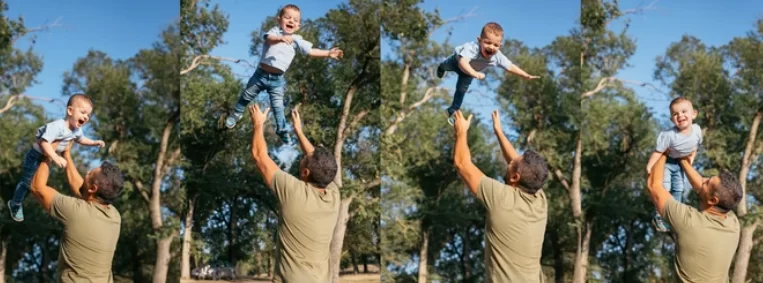
Understanding and practicing the rules might pave the way for getting creative and breaking the rules.
When you breach the norms, you generate unusual combination art that will become your brand, particularly when shooting formal photo sessions.
Experiment with new portrait concepts, composition, camera angles, and even model poses to get a photo that’s out of the box.
Whereas the Rule of Thirds is useful to create balance in shots. Disregarding this rule by positioning your model on the edge or directly in the center can result in interesting, striking photos.
White & Black portrait photography produces intimate, personal portraits. Here are some rulebreakers portrait photography tricks I performed:
Get a series of photographs together
Your DSLR camera might have the option of burst or continuous shooting mode. These modes will help you click different poses in a series when subjects are in motion.
It’s an amazing technique to click amazing portraits together in one shot. The series of portraits will create a sequence of drama or movement. You can pick the best out of this bunch.
If you scroll through these photos at speed, you will find them like a video. A video depicting the motion of the subject.
Post-clicking process and editing
If you are a beginner photographer, you might neglect the importance of post-clicking editing, as I did in the past. Proper editing is necessary for perfect portrait photography.
Post-clicking editing gives a lot of professional touch to the image by using unique editing techniques. But keep in mind that more editing can destroy your image.
While this is a completely different topic, certain basic strategies can dramatically improve the quality of your photographs.
Purists may regard editing as a bad thing, yet applications like Photoshop are simply tools for enhancing your photographs.
Consider the following scenario: you have snapped a headshot and a portion of the body is not seen in the frame. Maybe one of the hands is too far apart to fit in the frame.
To keep the spotlight on the face, you’d need to crop the hand. Nevertheless, when cropping extremities, make sure to clip midway between limbs or joints.
Removing half a bicep or 1/2 a forearm will improve the proportions of your photograph. Always avoid removing shoes, fingers, or hair from the photograph, as this will spoil your portrait.
Shooting in RAW form provides you with a lot of versatility in post-production.
There are numerous tools available, but the most popular by far are Instasize, Lightroom, and Adobe Photoshop.
For a valid reason, because they can easily perform everything you need while being reasonably priced.
Instasize is related to mobile photographers and is available for both Android and iOS devices.
Aside from resizing and cropping images, beauty tools can immediately smooth out imperfections in portraits with no effort.
Its collection of borders and color effects can also be used to improve photos.
Photoshop can be used to delete or retouch things from a picture. Unnecessary objects can be removed using copy and content-aware fill tools.
Even if you’re pleased with the quality of your picture as is, editing can assist in highlighting your chosen style and conveying creativity.
Most software contains pre-set tools or functions that you can choose from based on your circumstances.
The photographs can then be manually tweaked to create the best result. The picture can then be exported with the specified quality camera settings.
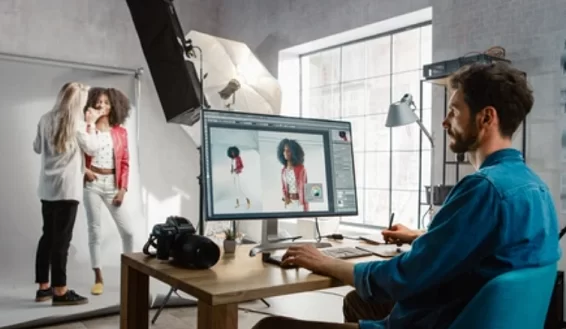
2 Additional Tips
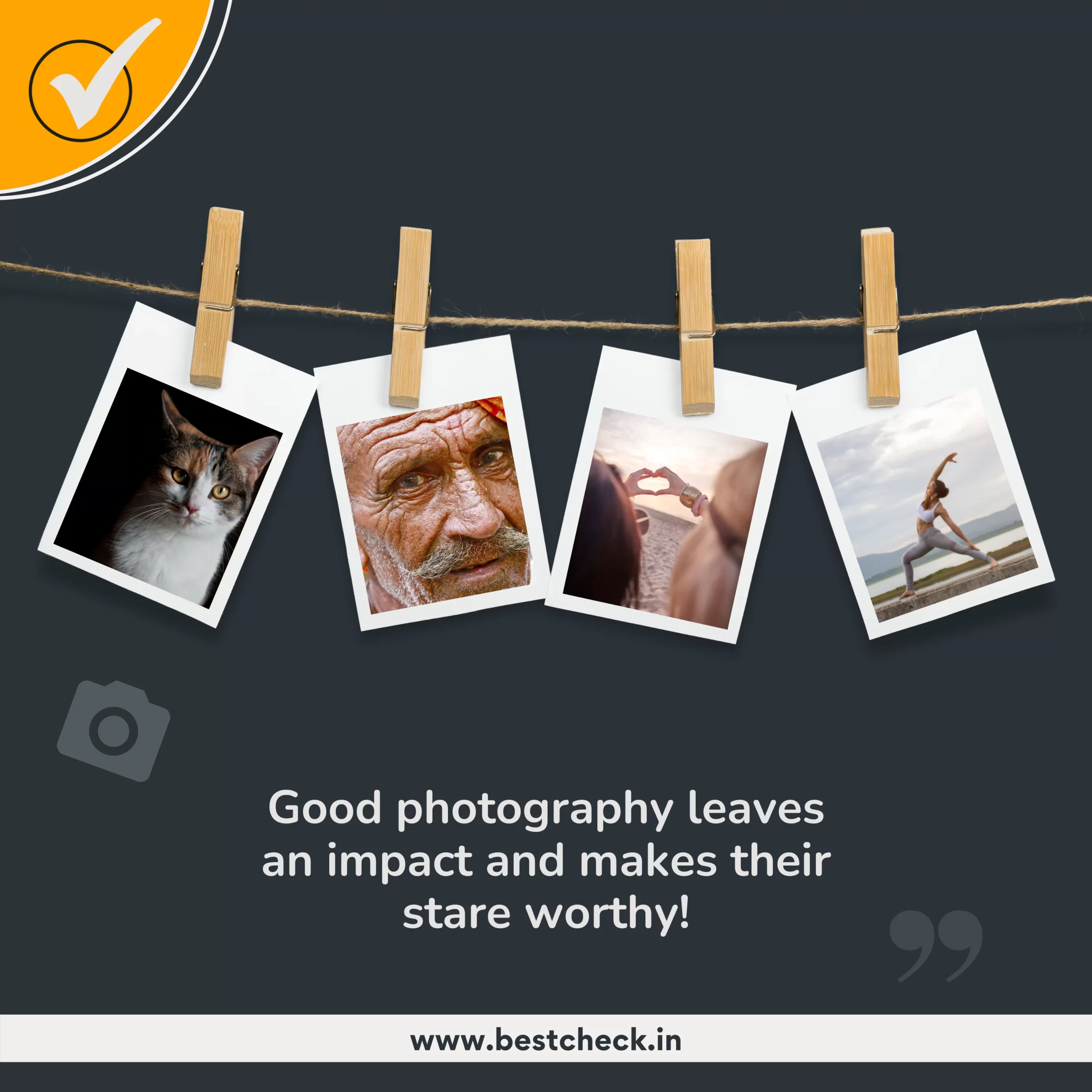
Additionally, if your photo is not matching the requirements, you can use Gels to change the mood of your photo.
Gels can assist you to adjust the tone of your portraits or changing the color temperature. You may need to modify your light temps if your photo shoot is producing abnormal skin tones or unusual color casts.
If you’re filming on a cloudy day, you might use a color temperature orange (CTO) gel to brighten up the scene. If your photographs appear to be overly warm, a color temperature blue (CTB) gel can be used to chill them down.
The warmth you’ll need depends on the type of photo you’re going for, so prepare your surroundings accordingly.
3 What is Portrait Photography? [History and Present]
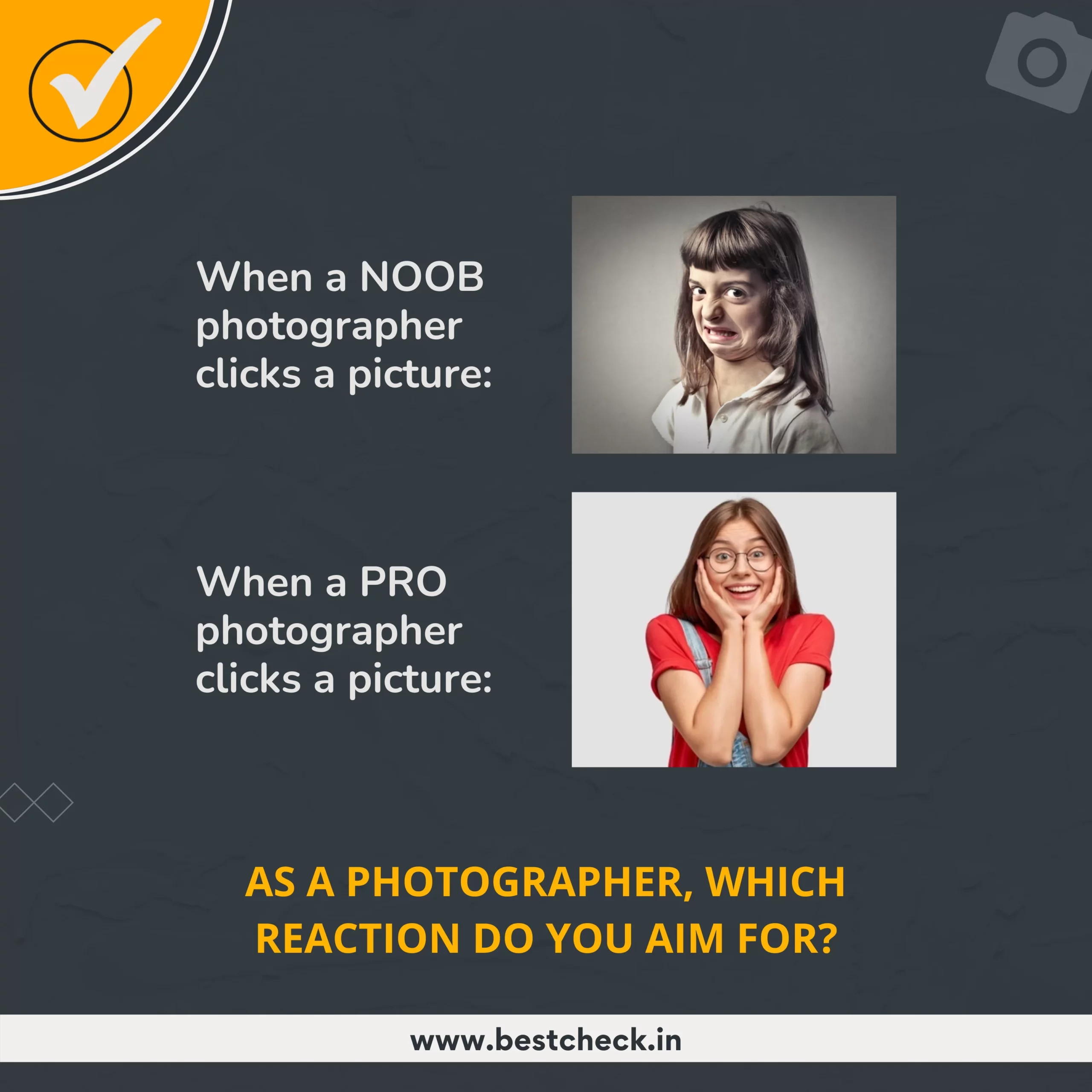
History
Portrait photography was first adopted by Picasso, and it has had a historic impact on Storytelling.
In the modern world, taking amazing portrait photographs also helps in storytelling. Capturing portraits is way easier than depicting the same emotion by painting.
But just like painting, learning portrait photography also takes time.
What is portrait photography?
Clicking portraits is an art to capture the character/subject within your photograph.
4 Here are facts to remember for perfect portrait photography
- The perfect technique coupled with a photographer’s emotion leads to great portrait photography.
- Just use correct camera settings, layouts, lighting, angles, backgrounds, focal length, shutter speed, ISO, poses, etc. Also do not forget to maintain a balance between subject and background.
- This is all about clicking an emotive and stunning portrait that erupts feelings in onlookers and keeps their attention.
- While that ambiguous definition covers the fundamentals, portrait photography involves far more than merely taking pictures of people.
- Observing the rules is as essential as breaking the pattern whenever the matter is of portrait photography.
5 Our Verdict
With these tips and tricks, I hope my readers have got an idea of effective portrait photography. I hope these tricks will be as useful to you while clicking pictures, as they were to me.
For more articles regarding photography, DSLRs, etc., stay tuned with BestCheck. Till then happy reading.
Community Q&A
References
-
1.
Eric T. Meyer: Digital Photography. - Retrieved on May 25, 2023
About This Article
Shreyal Shingala is a Content Writer and also a Product tester at BestCheck. Overseeing the content and products, she edits our preceding articles too. Along with that, she loves to spend time with her family when she got her leisure time. Previously, she worked as a content writer and researcher for a digital marketing agency and has written in different niches like blogs, comparison guides, entertainment, and many more.
This article has been viewed 2328 times.



